Author: Tian Hui
The most controversial aspect of electric vehicles is their inaccurate range estimation.
Consumers are not anxious about the range of electric vehicles, but about their actual range which can vary due to road conditions, seasons, weather, and other factors, leading to anxiety about electric vehicle range.
Especially in winter, the range of electric vehicles tends to decrease due to the use of heating and air conditioning, resulting in a certain gap with the official driving range.
Recently, “Electric Vehicle Observers” conducted a winter range test of BYD’s new premium electric vehicle BYD Dolphin in Shenyang.
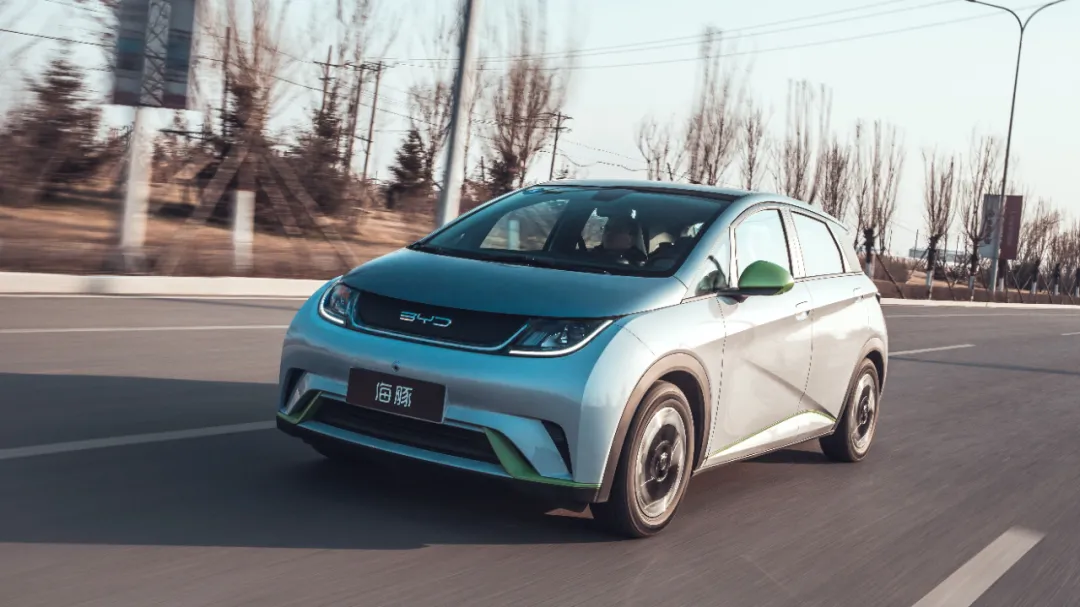
BYD Dolphin has a nominal range of 405 km, but its actual range is satisfying. In Shenyang winter daytime, at an ambient temperature of about 5°C, with automatic air conditioning set to 24°C, the actual range exceeds the nominal range by more than 80%.
In the context of electric vehicle ranges generally being reduced to 60% in winter, BYD Dolphin’s winter driving range is quite impressive.
Actual Range Increased by 81.4%
81.4% is the final result of the winter range test of BYD Dolphin conducted in Shenyang.
This winter range test was conducted in a warm winter in Shenyang, where the outside temperature was not as cold as expected, different from most situations of snow and ice.
On the day of the test, the temperature in Shenyang was around 5°C, similar to that in most cities in the Jing-Jin-Ji region, Shandong, and Henan areas, making this test result more relevant to consumers in those regions.
The test route mainly covered urban and national highways.
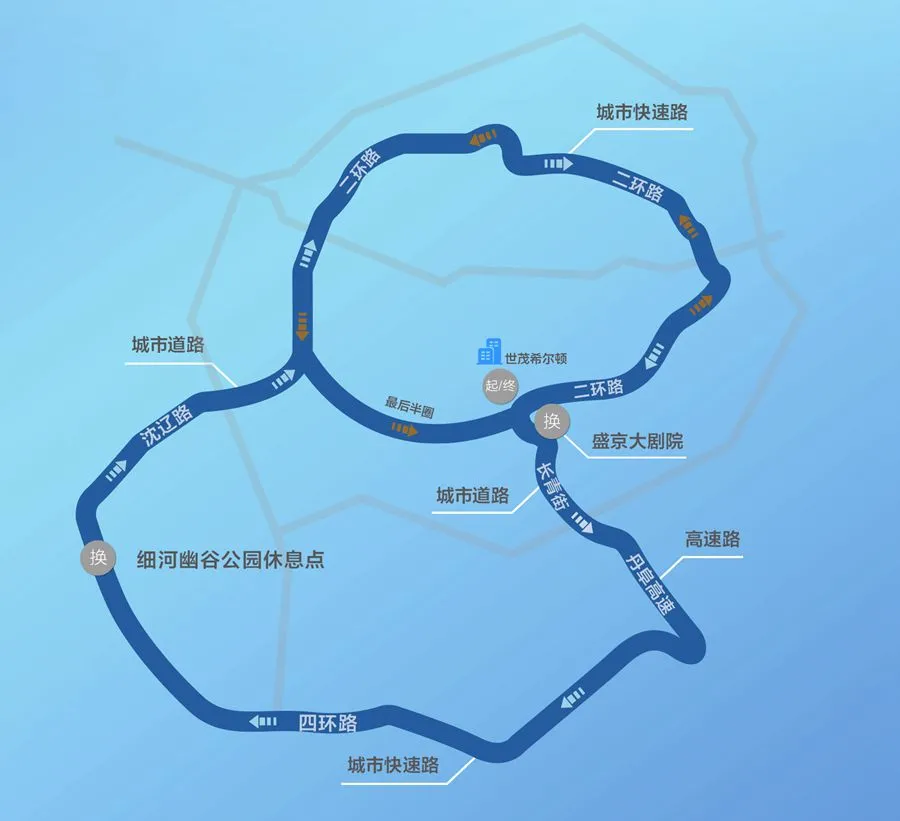
The route included part of the highway condition. The entire route was about 120 km for one loop, and the original test plan was to drive 2.5 loops. However, due to time constraints, only 1.5 loops were tested. The entire route was a flat road with a low elevation drop.
This test adopted a formation driving, and each vehicle was fully charged to 100% before departure.
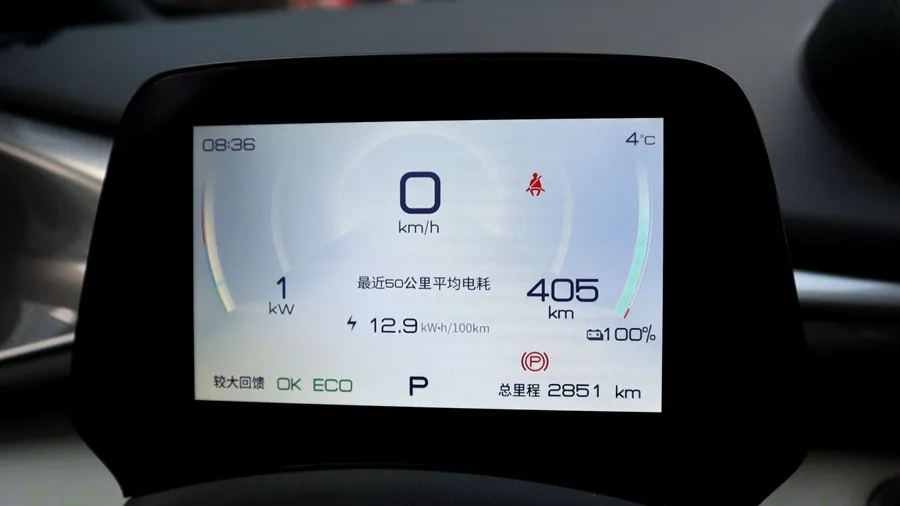 At the beginning of the test, we drove a BYD Dolphin test car with a total mileage of 2851 kilometers, 100% battery charge, and a remaining range of 405 kilometers.
At the beginning of the test, we drove a BYD Dolphin test car with a total mileage of 2851 kilometers, 100% battery charge, and a remaining range of 405 kilometers.
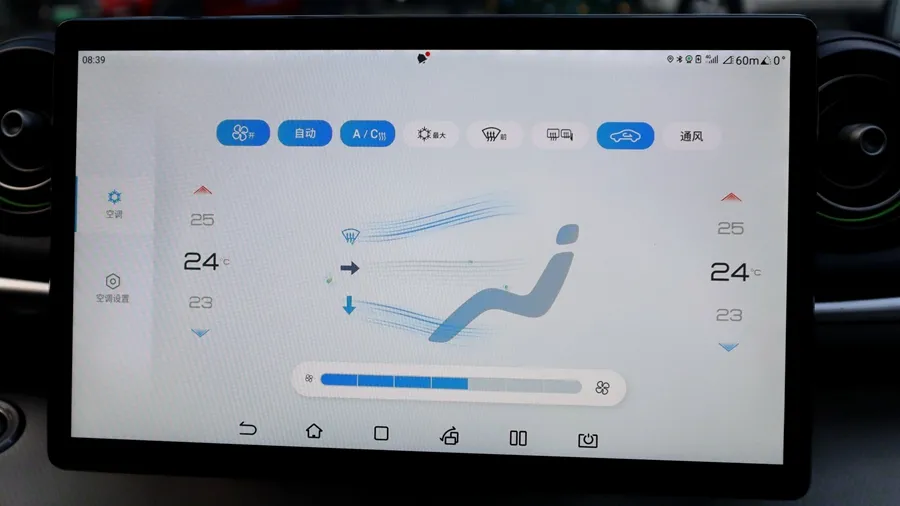
During the test, the automatic air conditioning was turned on throughout the journey, and the temperature was set to 24℃.
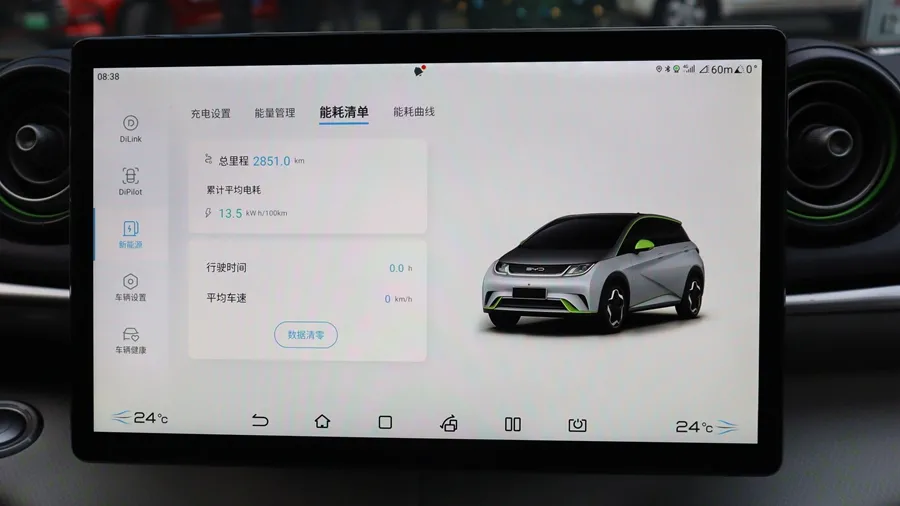
After resetting the range and energy consumption, the test officially started at 8:38 am.
During the test, the ECO driving mode, D gear, and strong recuperation mode were adopted, which is a more energy-saving driving mode for BYD Dolphin.
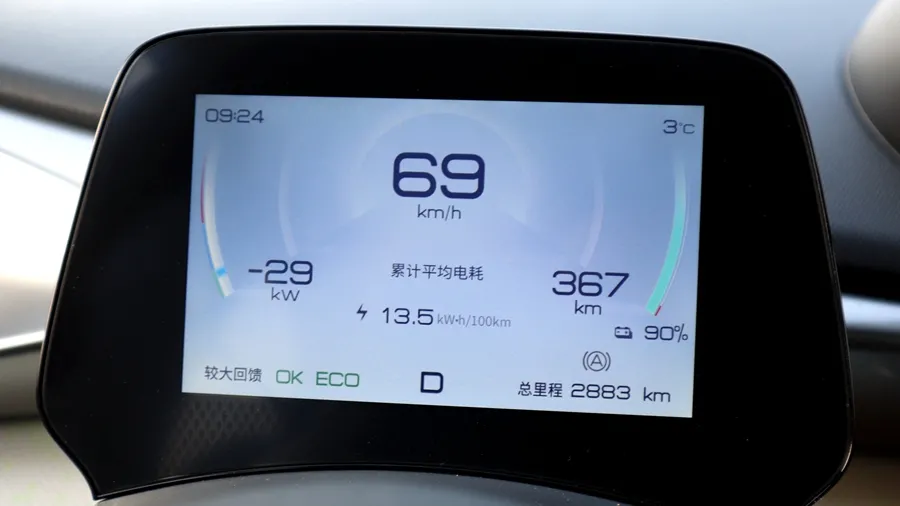
During the driving process, a record was made every 10% of the battery, and the final results are as follows:
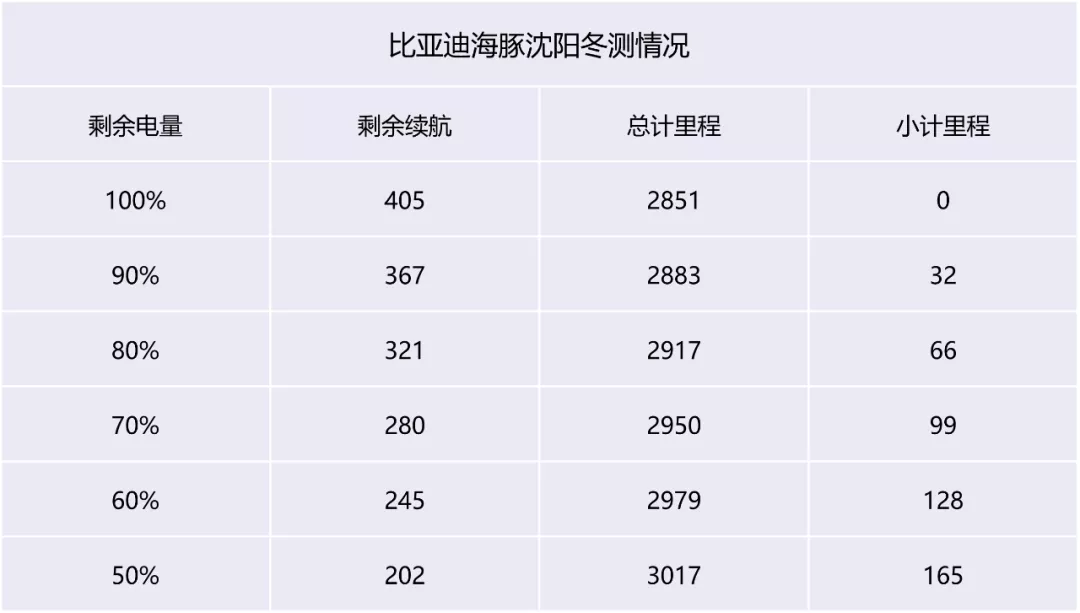
According to the test results, the winter range of BYD Dolphin is impressive. 165 kilometers can be driven with 50% battery level, which means 330 kilometers can be driven with 100% battery level, while the nominal range is 405 kilometers.
The measured winter range-to-nominal range ratio is 81.4%.
What is remarkable is the low energy consumption of BYD Dolphin at the end of the test, with only 11.1 kWh/100km.
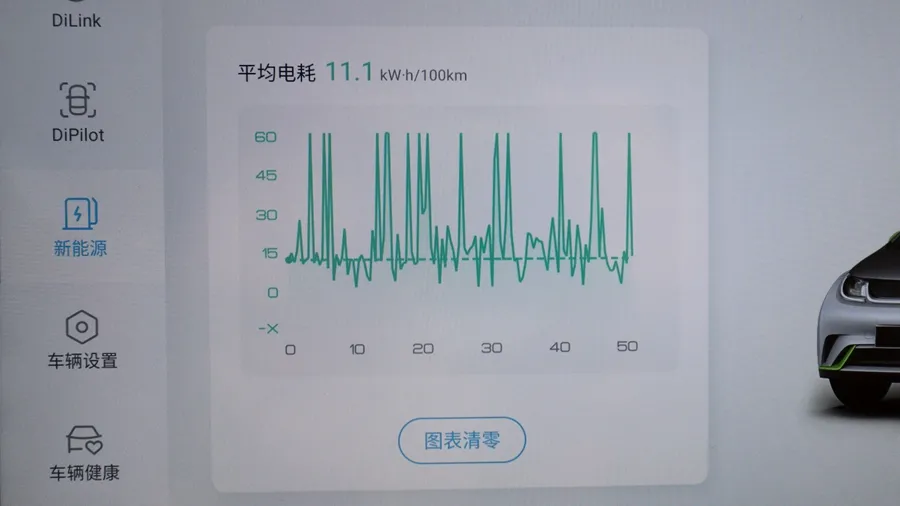
To achieve such results, it is closely related to the e-platform 3.0 technology adopted by BYD Dolphin.
8-in-1 electric drive has high integration
BYD Dolphin is the first model based on the BYD e-platform 3.0 technology, and the winter range performance of e-platform 3.0 is indeed impressive according to the actual test data.
The winter range attenuation is due to two reasons. Firstly, the power consumption of passenger cabin heating and battery heating is large, and secondly, the driving resistance in winter increases.
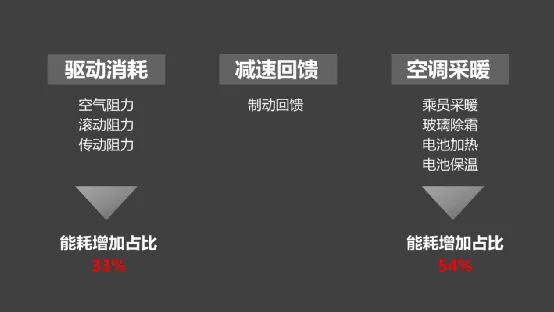 According to BYD’s statistics, energy consumption increases by 54% in winter due to heating with air conditioning, while energy consumption increases by 33% due to increased resistance.
According to BYD’s statistics, energy consumption increases by 54% in winter due to heating with air conditioning, while energy consumption increases by 33% due to increased resistance.
BYD Dolphin adopts the E-platform 3.0, which provides a solution to the winter cruising problem from the perspective of the entire vehicle.
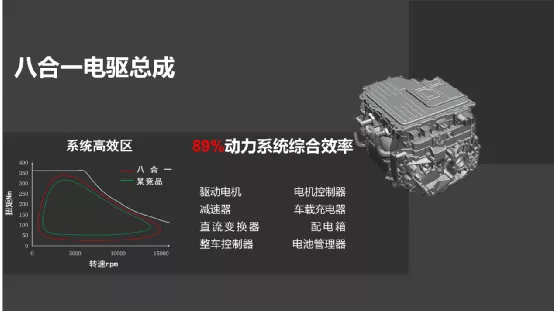
In terms of drive, BYD Dolphin adopts an 8-in-1 electric drive assembly, which integrates the electric vehicle’s drive motor, reducer, DC converter, vehicle controller, motor controller, on-board charger, power distribution box, and battery management system.
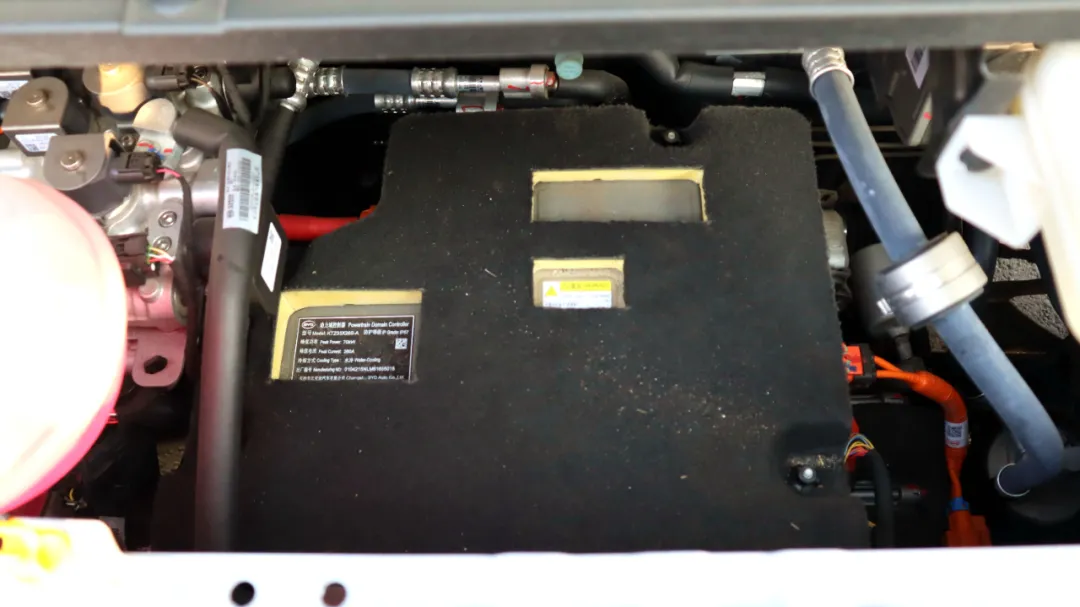
After adopting the 8-in-1 assembly, the comprehensive output efficiency of the electric drive system reaches 89%, which is at the forefront of the world. It should be noted that the comprehensive output efficiency is from the electric power entering the vehicle from the grid to the electric power being converted into mechanical energy to drive the vehicle forward.
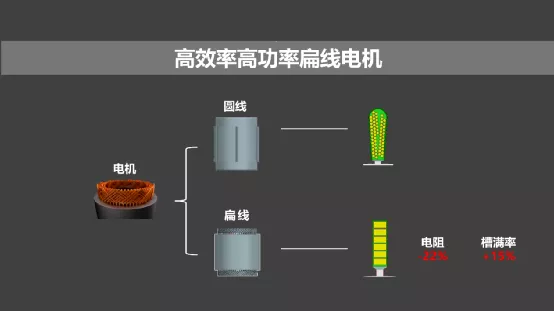
In terms of motor efficiency technology, BYD Dolphin has increased the motor efficiency to 97.5% by adopting flat wire motors and other technologies.
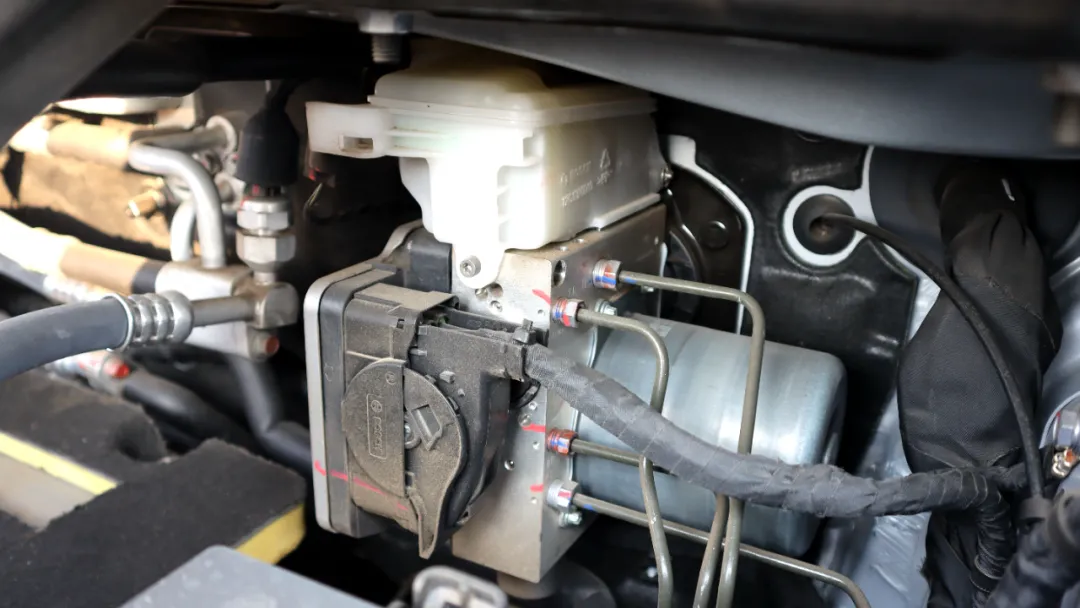
One of the advantages of electric vehicles is that during vehicle deceleration, kinetic energy can be recovered through regenerative braking. BYD Dolphin is equipped with an IPB electro-hydraulic braking system. The IPB system replaces the traditional vacuum can with a servo motor to generate negative pressure, effectively improving the efficiency of kinetic energy recovery.
Heat pump air conditioning has miraculous effects
Air conditioning energy consumption is the bottleneck of winter cruising.
How to reduce the energy consumption of heating with air conditioning is the hard power competition among various automakers.
BYD Dolphin is equipped with a vehicle-wide thermal management system based on a wide temperature range heat pump air conditioning system, and adopts a cold-methane-based direct cooling and heating technology for the power battery.
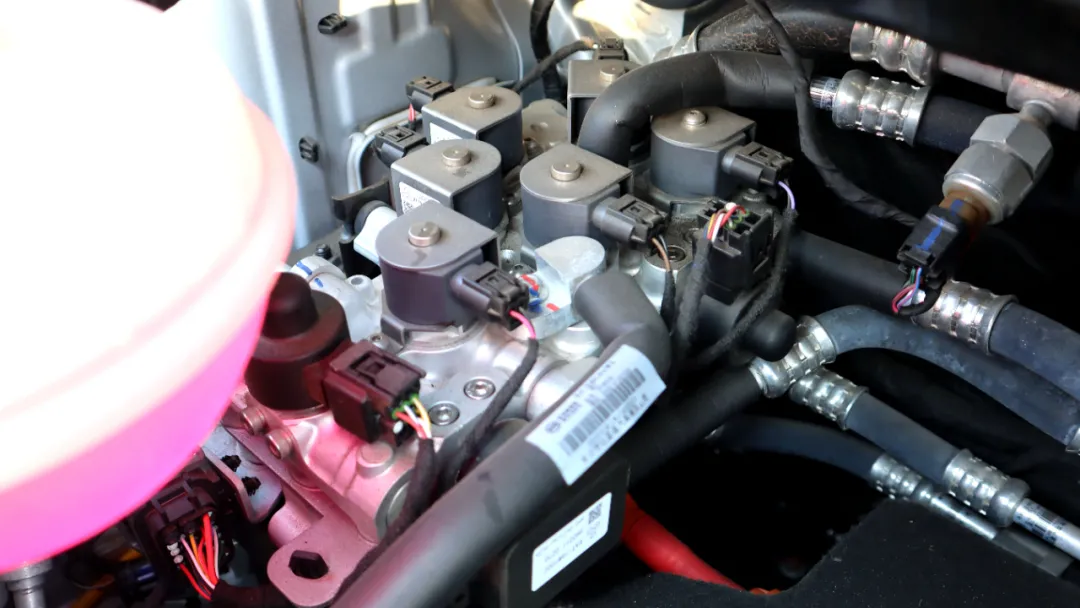 In winter, the consumption of passenger compartment heating and battery thermal management accounts for more than 50% of the total vehicle energy consumption. The traditional non-heat pump direct heating scheme usually uses PTC to heat air or water, which is a real energy production process, but the energy efficiency ratio is about 0.95, and a lot of electric energy is required to be consumed.
In winter, the consumption of passenger compartment heating and battery thermal management accounts for more than 50% of the total vehicle energy consumption. The traditional non-heat pump direct heating scheme usually uses PTC to heat air or water, which is a real energy production process, but the energy efficiency ratio is about 0.95, and a lot of electric energy is required to be consumed.
In contrast, the heat pump heating scheme is a heat transfer process using refrigerant as a medium, which is an energy transportation process. The highest energy efficiency ratio can reach 2, which means that for the same heat demand, the electrical energy consumption of the heat pump heating scheme is only half that of the traditional non-heat pump heating scheme.
The BYD Dolphin is based on a heat pump air conditioning thermal management system, which uses power battery refrigerant direct cooling and heating technology to connect the thermal management boundaries of the passenger compartment and power battery components, improving the efficiency of electric energy use. This is also one of the main reasons for the low energy consumption of the BYD Dolphin in this winter test.
After adopting the heat pump air conditioning, electric vehicles can also further reduce the layout of the front compartment and maximize the space for the passenger compartment.
When the BYD e-platform 3.0 was released, the various configurations such as 8 and 1 electric drive and wide-temperature heat pump were dazzling, and the platform itself and the use of new technologies in the drive system and thermal management system posed considerable engineering challenges. Therefore, the actual performance of the first car Dolphin under the BYD e-platform 3.0 is highly anticipated.
From the results of the actual winter test in Shenyang, the BYD Dolphin has better winter-tested endurance performance, which is indeed well beyond the average level of vehicles in the same class. The comparison between the actual cruising range and the performance range under test conditions of the BYD Dolphin exceeded 80%, which also proves that BYD’s e-platform 3.0 is not just hype, and it has outstanding performance in terms of cruising range.
After years of hard work in the field of new energy vehicles, BYD launched e-platform 3.0 and started with the first car Dolphin, using an all-layered and efficient design and development system to create cars, integrating innovation at the whole vehicle, system, and component levels, breaking the boundaries of systems such as drive, charging, and thermal management, and improving the winter endurance performance. In the future, it is hoped that e-platform 3.0 can launch more and better models.
This article is a translation by ChatGPT of a Chinese report from 42HOW. If you have any questions about it, please email bd@42how.com.